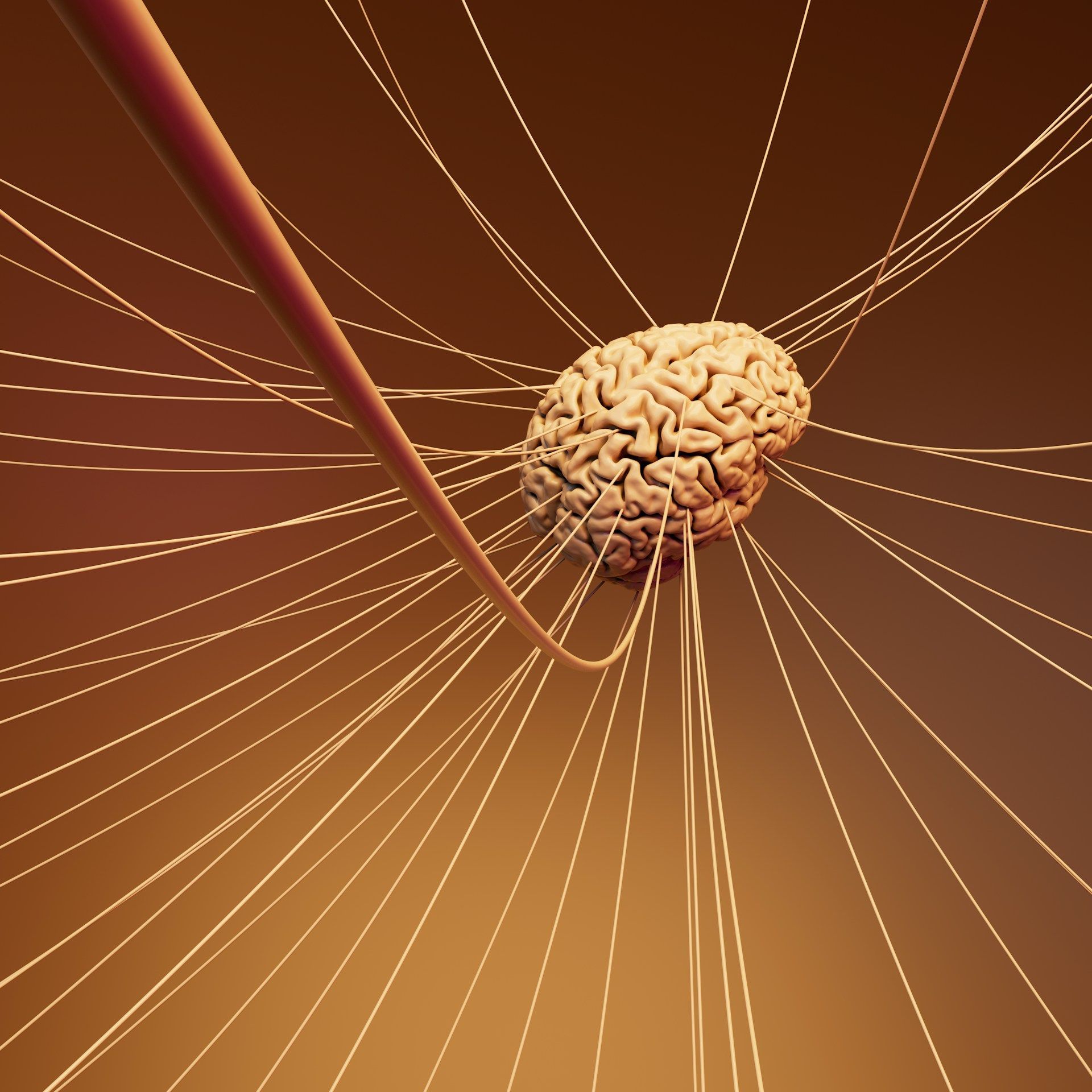What Mindfulness Is Not
Correcting the misconception that mindfulness is a modern mental health "fad."
Every now and then, the Universe kicks me in the derriere and tells me it’s time to step up and improve what I do. I had such an experience today while listening to a psychology lecture. The presenter, a learned professor of psychology, pooh-poohed mindfulness as a modern therapeutic technique, dismissing it as “forgetting the future and the past” to simply live in the moment.
I immediately knew I needed to address this misconception in a blog post. My beautiful fellow yogis, while mindfulness does focus on connecting fully to the present moment, it’s not about hedonistically saying, “this moment is all we have, so let’s
party!” Nor is it forgetting about the past or ignoring future concerns — quite the opposite.
While I may not be the most qualified person to describe the whole of what mindfulness encompasses, listening to that lecture made me realize that somebody has to address these serious misconceptions about it flying around in academic circles and making their way into the collective unconscious. Since I am a yoga guide, I guess tag, I’m it. Let’s explore why mindfulness benefits positive mental health, starting with what this practice is not.
Mindfulness Is Not Dissociation or Escaping Into Fantasy
From the outside, someone deep in mindfulness meditation may look like they are daydreaming, even taking a nap. That doesn’t mean they are doing “nothing.” A lot could be going on under the surface, but that inward journey isn’t visible from the outside.
To the uninitiated eye, mindfulness meditation practice may well look identical to going off into a fantasy world. When performed without the tutelage of a trained guide, that’s exactly what can happen sometimes. I know, because it happens to me. Sometimes, you take a stroll down rumination alley. Other times, you get caught up in intricate mental plots and schemes that ignore reality, falling in love with what could be so much that you ignore what
is.
However, avoiding these mental traps is exactly what mindfulness training teaches you to do, and the only way to get better at it is to practice. Regularly. Daily. What you’re challenging yourself to do, each time you return to the breath or your selected mantra, is to break the mental chains that rumination and fantasy bind you with.
Because here’s the deal: You can’t remove your head from your shoulders and continue breathing, thinking, meditating or doing anything else. As anyone who has lived with poor mental health knows, you have to learn to coexist happily with your mind because there is no escaping it. Alcohol and other drugs may bring a temporary shift in consciousness, but the reality you wake up to afterwards is often far, far worse than the one you turned to substances to escape.
Mindfulness is the opposite of dissociation and fantasy. It’s training yourself to recognize when you go down rumination or fantasy road, which may be one of the hardest things many of us mere mortals do in life. You might look like you are doing nothing when sitting in mindfulness meditation, but inside, you’re building awareness. Awareness of reality in the present moment, yes, but also awareness
of how you arrived at the present moment. Awareness of how your actions, your choices, in the moments to come could influence your future and the futures of everyone your life touches.
You aren’t waving goodbye to the past or the future by grounding yourself in the present. What you’re doing is allowing muddy waters to clear so that you can view the totality of your circumstances — including what has been and what may be — as they are in reality.
Mindfulness Is Letting the Waters Clear
Metaphors have always helped me understand tricky concepts better, so I’ll use one here. Think of yourself as a body of water. The outside world is constantly muddying you. Winds stir up your surface, all sorts of creatures land or toss rocks and pebbles, kicking up great gobs of obscuring dirt.
Mindfulness is allowing these waters to clear. It’s impossible to completely turn off outside distractions, just as you can never entirely turn off your mind. However, by establishing a singularity of focus — your breath, a mantra, yes, even sometimes a chocolate bar — you come as close to it as humans can get.
Letting the waters clear doesn’t mean the creatures along the shore cease to exist. Sooner or later, something will kick up all that mud again, usually sooner than later, which is one reason why daily practice is so crucial. Mindfulness simply creates a necessary break for clarity to emerge, building a still point inside yourself so that when winds howl and pebbles rain, you have a better chance of navigating the storm.
Mindfulness Is Hard, But Necessary, Work
I’ll be the first to admit that mindfulness can be hard. When you still the waters and gain clarity, you might not like some of what you see. For example, one of my toughest realizations was that I engaged in countless toxic behaviors myself, even as I was quick to criticize them in others. I didn’t sit down in meditation with the objective of, “Let’s see how I contribute to my own problems.” What I did was create space for this realization to arise from within.
Creating this space, and then remaining open to what arises, is what makes mindfulness so powerful. There’s an undeniable authenticity to realizations gained through mindfulness practices because the only person who can ever truly know your mind is you. When I sit in mindfulness meditation, I examine each thought by visualizing a little scientist writing it down in a notebook, then flipping to a blank page. However you choose to note each thought, then let it go, is valuable practice in avoiding rumination and fantasy loops. Some people picture each thought floating away in a cloud, others in a balloon that they then pop and let dissolve into the air.
Every time you recognize, “Hey, I’m ruminating,” or, “hey, I’m getting lost in a fantasy world with no plans to make it a reality,” you are training your mind and spirit. For every action begins with a thought. That thought often originates from an emotion. Emotions also have a nasty way of making thoughts go sideways, even become maladaptive, especially if you have a trauma history. Maladaptive thoughts lead to feeling even more miserable, which leads to more maladaptive thoughts, on and on. It’s an ever-growing spiral of despair unless you do something to interrupt it.
That something is awareness. It’s gently redirecting your attention, returning it to the breath, and teaching yourself to breathe through difficult emotions while sitting in them instead of stuffing them down or seeking escape through dissociation or fantasy.
It’s impossible to overstate the difficulty or the importance of this work. The best psychologists in the world cannot heal you if you are not willing to examine your own thoughts, feelings or behaviors. To do this, you must get outside of them and detach from them, which isn’t easy. That’s what you’re doing when you’re practicing mindfulness, returning to the moment. You are experiencing pure awareness, or as close to it as human beings can get, looking at yourself as part of the totality of everything from an outside observer’s perspective.
Mindfulness is Priming the Nervous System for Clarity
If you still conflate mindfulness with idleness or daydreaming, perhaps a more biological explanation will suit your temperament. Mindfulness practices prime your nervous system for clear thought, so even if you are of the school who believes that the mind is only the brain and not in any way related to an independent spirit, well, your brain is the CEO in charge of your nervous system.
You can think of mindfulness practice like you would bicep curls, only you’re toning your brain instead of your arms. Such routine practice is necessary in today’s world. Although
short bursts of cortisol increase thinking clarity, this biological mechanism evolved in primates when their only care in the world was fleeing the occasional lion. However, the modern world keeps the vast majority of people in a chronic state of
low-grade stress and inflammation that can spur disease and muddy their thought processes.
Modern nerves are like piano wires on an instrument that never stops playing. You can’t flee from worries about how to pay your rent, and the constant, incessant threat
can make focus impossible and lead to the development of mental disorders. The best way to get a temporary break, to still the waters and relax the nervous system, is to engage in calming mindfulness practices. Whether you think of it as strengthening your spirit or honing your nervous system, engaging in daily mindfulness practice helps.
Mindfulness Is Not a Modern Fad
I had to laugh a bit at the suggestion that mindfulness is a modern therapeutic fad. Nothing could be further from the truth. Such practices go back thousands of years, and that’s just in the written record. They have probably existed since humans first wondered about the reality of their existence.
You could argue that mindfulness is the original therapeutic modality. After all, how did the great psychologists complete their work if not by immersing themselves fully and mindfully in developing their theories? While mindfulness practices go by various names in different cultures, the basic human need to still the waters and come back to the self has existed in every society known to humankind. Even the workaholic and puritanical Western world incorporated a day of rest into their religious teachings.
Mindfulness Is a Crucial Tool in the Modern Mental Health Toolbox
Mindfulness may be the most crucial tool in the modern mental health toolbox. Again, the realizations that arise from within during such practices aren’t always pleasant. It’s best if you can have someone you trust to process what comes up with when you begin your journey. However, once you come to such a realization, the results are transformative and long-lasting. It’s what keeps me sober these days, nearly effortlessly. Once I became mindful of alcohol's effect on my mood and how my resulting behavior impacted others, it was natural to quit, even though I failed in every previous attempt to cut back.
Mindfulness is transformative, long-lasting — and, perhaps most importantly, at least in the United States — free. It’s why I’m so passionate about Only in Sedona Yoga, and why we create the content that we do. Therapy is prohibitively expensive, and those who need it the most are often those least able to afford it. That includes folks like me
with other medical conditions, putting mental health on the backburner, those who are
uninsured or underinsured, and those who simply don’t have the right resources available where they live.
However, anyone can practice mindfulness. Some might choose to put on a yoga or meditation video. Others might cook a gourmet meal or weed the garden. Still more might simply sit, returning their attention to their breath. Finding that still point, that singularity of focus, detaching from the ceaseless miasma of mental clutter and external stimulation, and allowing space for what arises from within doesn’t require a copay.
What Mindfulness Is Not
Mindfulness is not a fad. Nor is it an escape into a present-moment fantasyland where the past and future no longer matter. It’s the opposite of dissociation, of running away from your problems. It’s learning to sit with these difficult emotions and realities and observing their effects on you, your thought patterns and behaviors.
Mindfulness is a tool; it’s a path to follow through the jungle of your mind. Whether you conceive of it as a way to get in touch with the universal Divine or simply a means to calm your central nervous system, mindfulness is a crucial tool — perhaps the most important one — in developing positive mental health.











